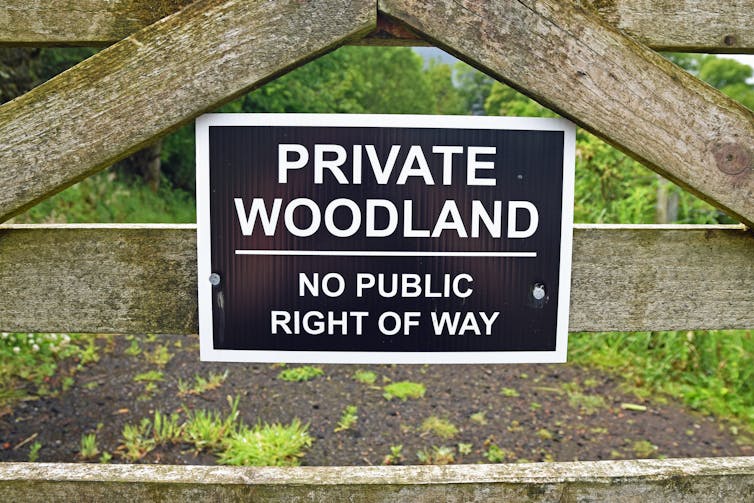By ascending the plateau of Kinder Scout – a mountain in England’s Peak District owned at the time by the 10th Duke of Devonshire and guarded by gamekeepers from his nearby Chatsworth Estate – around 400 walkers committed one of the most famous acts of civil disobedience in British history on the weekend of April 24 1932.
The Kinder Trespass, as it became known, included members of the Young Communist League and British Workers Sport Federation. Their trespass that day was met with violence. Six men were arrested for assaulting the gamekeepers, unlawful assembly and breaches of the peace. Supporters, landowners and newspapers such as the Manchester Guardian followed the subsequent trials with fascination. Ultimately, the episode gained attention for various clubs and organisations campaigning for greater public access to the English countryside.
The Peak District was a symbolic choice for the trespassers. Not only was the area rich in outdoor space and natural beauty, it was also accessible to several industrial towns in the North and Midlands of England, providing a weekend escape from working life. The first world war was still a close memory, and many walking clubs included former soldiers who recalled being asked to fight for the fields and woodlands of home.
The residents of Totnes in Devon and their supporters recently invoked the spirit of the 1932 mass trespass 90 years on with an organised trespass on the Duke of Somerset’s estate in Devon. Their reception was markedly different, however. These trespassers were able to sit, play music and eat picnics. Some explored the woodland, clearing up empty shotgun cartridges and litter from the estate’s pheasant shoot.
Despite the environmental grants and farming subsidies paid to many landowners, it is claimed that only around 8% of land in England is open to the public. Just 1% of the population owns half of the land in England according to another claim, though the secrecy afforded to property trusts and corporate landowners make it difficult to provide an exact figure.
Unlike the mass trespass of 1932, there will be no high-profile court cases. Instead, the Devon trespassers have been able to use more modern methods to raise awareness of their cause. Someone in the group discovered a pit of rubbish and dead pheasants on the Duke’s land and shared the images on social media, contrasting the care taken by the trespassers with the behaviour of the landowners.
Still, there is much that unites the trespassers of 1932 and 2022. Groups that lobby for wider access to the land have always included environmentalists and ecologists eager to study and protect fenced-off nature. Both generations of campaigners have also drawn attention to the power disparity between landowners and the general public, and urged that more must be done to unite people with a countryside that should belong to everyone by right.
The right to roam
So what has changed, legally and socially, since 1932? In 2000, access activists would have been forgiven for thinking that the battle had been won. The Labour government was poised to introduce its wide-ranging Countryside and Rights of Way Act (CRoW Act) which promised to open up great swathes of the English and Welsh countryside for public access. When environment minister Michael Meacher introduced the act to the House of Commons, he even claimed it would bring “to reality the dream of [prime minister] Lloyd George that nobody should be a trespasser in the land of their birth”.

The CRoW Act introduced a limited compromise between walkers and landowners. People were given the right to explore mountains, moors, heath and down (unfertilised, chalky grassland) as well as registered common land. Campaigners estimate that this only covers about 8% of land in England and Wales. The CRoW Act excepted woodlands, grasslands and waterways in private hands, which remain closed to the public. Some landowners were even able to spread fertiliser to change the plant species growing on their land to exempt it from the new rules before the mapping process could be completed.
That the Guardian recently claimed that “there is no right to roam in England’s countryside” is testament to the limitations of the 2000 CRoW Act and to the frustrations of the access lobby two decades on.
The pandemic demonstrated the importance of outdoor recreational space to our physical and mental health. The right to enjoy footpaths and moorland became a contentious issue once more, as some walkers were targeted by police for exercising in the Peak District during the first national lockdown.
As the cost of living crisis bites, many people ought to question how private landowners are funded and whether the public gets good value for the money it pays in taxes. Trespassers on the Duke of Somerset’s land noted that the Duke was in receipt of public money to maintain his woodland, yet this funding came with no requirement to share the land with the public. Just as in 1932, the political and moral case for a wider right to roam is compelling.
Ben Mayfield does not work for, consult, own shares in or receive funding from any company or organisation that would benefit from this article, and has disclosed no relevant affiliations beyond their academic appointment.
This article was originally published on The Conversation. Read the original article.







